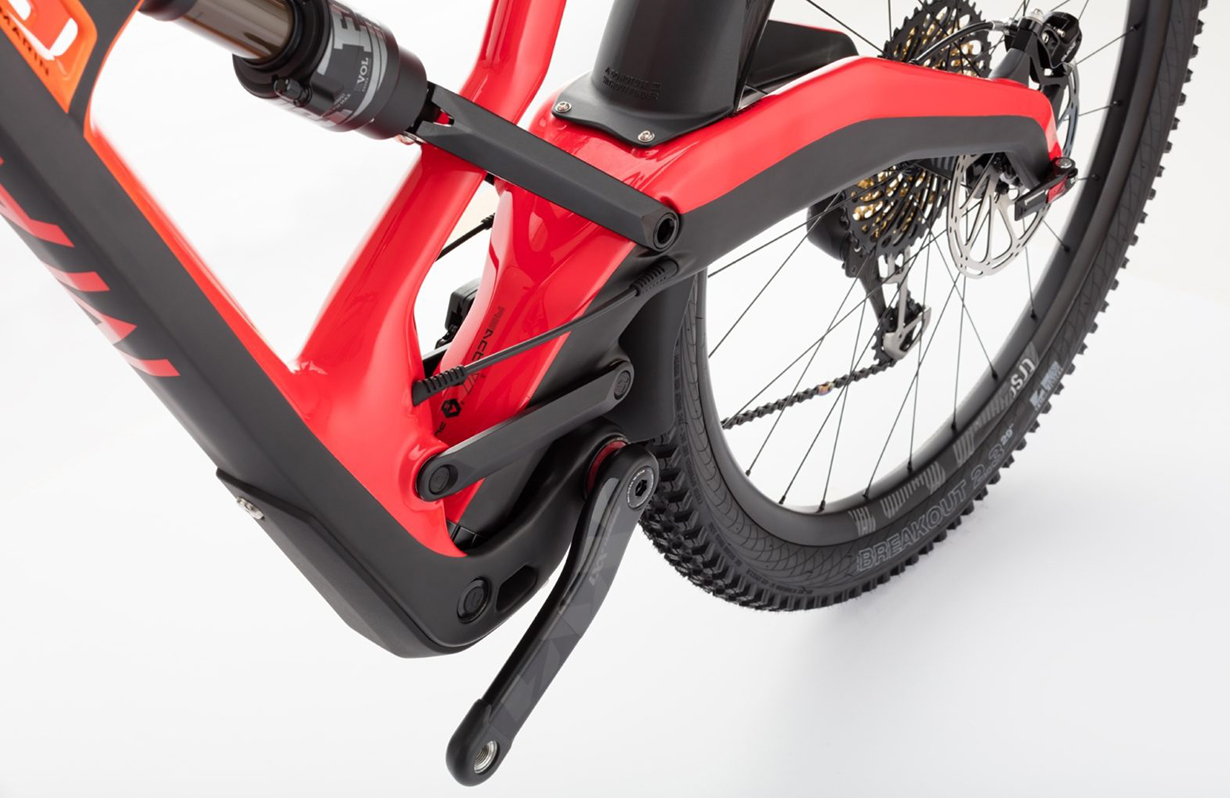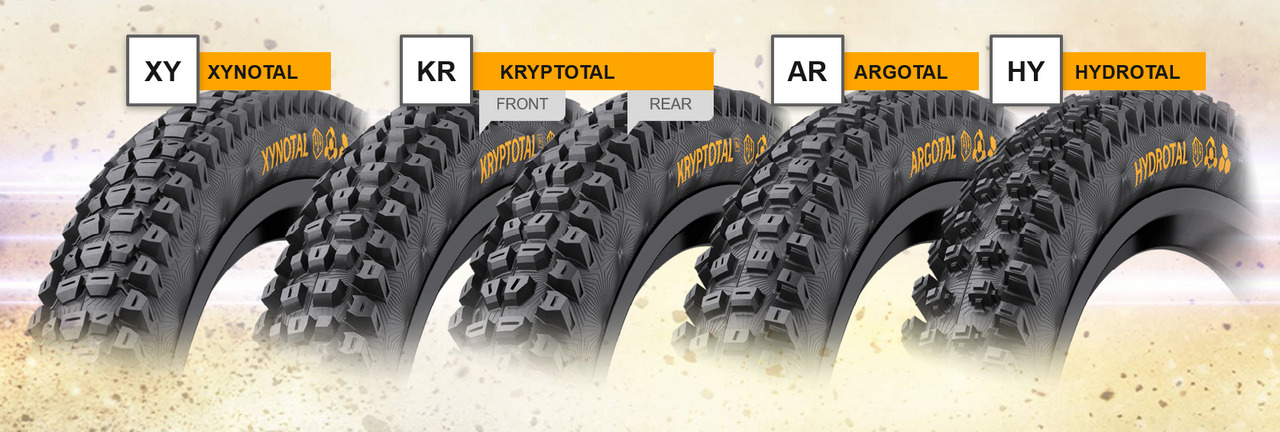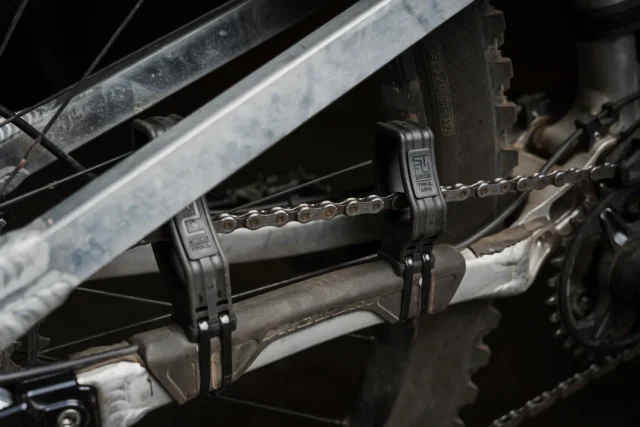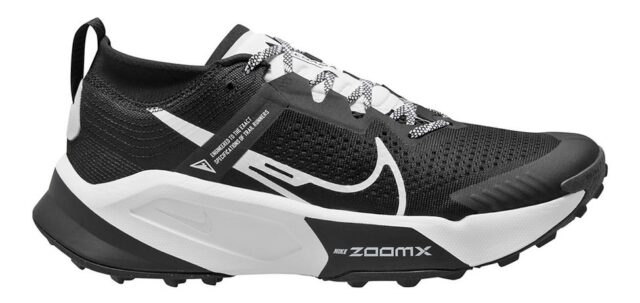
Picture this: you’ve spent months or years designing, manufacturing, prototyping, tweaking, testing, and finalizing a cool new piece of outdoor gear, and now it comes time to give it a name. It’s got to stand out and be recognizable on a catalog page or website, but it also can’t already be used by the dozens (or hundreds) of other brands in your category. Does it also need to be functional and tell the customer what the product does and how it differs from the others in your lineup? How do you do that in a concise, clear manner? Oh, and do you sell in countries worldwide? Better check to make sure it doesn’t mean something uncouth in another language…
While it’s not something many folks think about, the seemingly simple process of naming a product can actually be quite tricky. And as a result, we end up with some that are odd, confusing, complex, hilarious, and/or absurd. This can be frustrating at times, but it can also be pretty funny, so we’re back with a roundup of some of our reviewers’ nominees for the best, worst, and otherwise-noteworthy product names in the outdoor space.
We’re sure there are many that we’ve missed, so let us know your nominees in the Comments Section.
Luke Koppa:
The Good:
Flylow’s “The Perm” Membrane: I think naming your air-permeable waterproof membrane “The Perm” is funny. That’s it.
Moment Deathwish: I’ve included it before, but the fact that Moment decided to name their very strange, radical, unproven (at the time) ski the “Deathwish” still cracks me up (and you can definitely argue that it falls into the “bad” category). While the Deathwish design has now proven itself again and again, the origins of its name still put a smile on my face.
(Some) Running Shoes: Running brands tend to keep names around for a while, with some venerable shoes being sold under the same name for decades but featuring substantial construction updates each season. So even though it’s got the same name, it might be a totally different shoe. How do you account for that? Just add a corresponding number on the end. The Hoka Clifton 5 came before the Clifton 6 and after the Clifton 4. Done. It’s that simple.
Meanwhile, it can be nearly impossible to keep track of products in other categories that have gone through similarly substantial updates over the years, but keep the same exact name. I know adding a number to things like ski names, where there’s often another number or two, isn’t always feasible, but I’m fully on board with more companies adopting this approach.
The Bad:
NAILD R3ACT 2PLAY Suspension: I mean, look at it. Just… why?
ATK’s Bindings (& Distributors): These bindings are awesome, and ATK’s own line is actually pretty intuitive. But if you live in North America, you’re typically purchasing them through one of several distributors, all of which come up with their own names (and some of which have slightly different features). You’ve got the ATK Raider 12, the Majesty R12, the Hagan Core 12, DPS R14, Moment Voyager XII… and that’s only looking at one collection.
Fishing Lures / Flies: Now, to be clear, I tend to get a kick out of how obnoxious some fly and lure names are. I find it very funny when I walk into a fly shop and an experienced, proper-looking employee or guide goes from waxing poetically about the storied history of a given stretch of river to then telling me that the best way to catch a big brown trout there is to throw a “Sex Dungeon” at it. Or maybe a “Drunk & Disorderly.” Or “The Fly Formerly Known as Prince” (a take on the famous Prince Nymph). Meanwhile, flipping through a Bass Pro catalog can leave you wondering how folks can come up with so many strange names. The appreciation of (often juvenile) humor in their naming seems to be one thing that fishing lures and climbing routes have in common.

Racing & Piste Skis: There seem to be two major camps in the product name world: those that choose arbitrary but unique names, and those that instead opt for names that describe what a product is, what tech it features, and so on. Both have their upsides and downsides, and both can get a little ridiculous, especially for those unfamiliar with naming schemes. Racing and piste skis seem to fall squarely in the latter camp.
There are few product names I get more questions about than Fischer’s RC4 The Curv collection(s). One of our favorite carving skis, known simply as “RC4 The Curv,” is particularly hard to find since there’s also the “RC4 The Curv GT,” “RC4 The Curv DTX,” “RC4 The Curv DTi,” and others I’m sure I’m forgetting. Having one ski with the same name but no acronym after makes searching for that ski particularly difficult, and I generally just think throwing “the” in the middle of a product name sounds clunky.
Other racing collections can be similarly confounding, especially since they (understandably) commonly include the name of the binding they come with. Do I want Atomic’s “Redster X9S Revoshock S + X 14 GW”? Or maybe the “Redster G9 Servotec + X 12 GW”? What about the “Redster Q9 Revoshock S + X 12 GW”? Or maybe the “Redster Q9.8 Revosock S + X 14 GW” is the ski for me?
The North Face’s Running Shoes: Look, I realize that branding is important, but as someone who types out, edits, and reads a lot of product names, going through the names of all TNF’s shoes makes my head hurt a little bit. I might not mind it as much if it wasn’t for all the ALL CAPS. We tend to use full product names in our reviews and articles exactly how the brand uses them to avoid confusion and ambiguity, but reading “VECTIV Exploris Mid FUTURELIGHT Boot” a half-dozen times feels like some product manager is aggressively shouting at me.
- Matt Mitchell: I second Luke’s frustration with The North Face’s naming conventions. VECTIV technology serves as the cornerstone for the brand’s overhauled trail running line, clearly a piece of innovation they feel plenty proud of. That’s all well and good, but insisting on wedging “VECTIV” into their models’ names comes off as brash. You could make the case for including it as a way to differentiate between shoes that use VECTIV technology and those that don’t, except that all of the shoes The North Face’s currently offers include it, so what’s the point? While I’m here, I’d also like to quickly shout out The North Face VECTIV Eminus, which I kept referring to mockingly as the “VECTIV Enema” for a few months before I was reproached by an overzealous tech rep.
Continental Tires: Argotal, Hydrotal, Kyptotal, Xynotal — Continental’s recently overhauled line of mountain bike tires have quickly proven themselves across DH and EWS podiums, but it’s taken me some time to figure out what they are — and just how to pronounce them.
- David Golay: I’ve been testing a bunch of the new Continental tires (more on those coming soon) but I’m with Luke that the names are pretty confusing. The assortment of unfamiliar words that all sound kinda similar makes keeping track of them tough. At least their rubber and casing names are straightforward: “Endurance,” “Soft,” and “Super Soft” for the rubber, and “Trail,” “Enduro,” and “DH” for the casings.

The Otherwise-Noteworthy:
Arc’teryx: A common theme in the outdoor industry (and beyond) is to use a naming scheme across a line that actually describes what a product is. And for those willing to put in the time, that can be very useful, but for others, it can be super confusing. Arc’teryx is a great example of this. E.g., the “Alpha SL” is a climbing-oriented piece built with being “superlight” as the focus, while the “Beta SV” is a do-everything shell designed for “severe” conditions. The Atom LT is pretty light, while the Atom AR is more for all-round use. However, if you’re not familiar with their collection, you might as well be reading some strange foreign language that’s a mix of Greek names, some Roman letters, and seemingly random acronyms.
DT Swiss: Same deal as Arc’teryx — as someone who’s a lot less experienced with bike brands than apparel brands, DT Swiss’s naming scheme still confuses the heck out of me. Our bike editor, David, kindly educated me about how the numbers in their rim names correspond to weight (or at least they did with older wheel sizes), and their fully built wheel numbers correspond to which hubs they feature. Then the acronyms refer to intended use. But even though I know that, I still have a hard time deciphering what exactly sets each product apart.
Norrona: Norrona’s naming scheme falls squarely in the “function over brevity” camp; their product names tend to tell you exactly what they are, in not so few words. I immediately know what the “Lofoten Gore-Tex Pro Plus Jacket” is, but that doesn’t mean I don’t still get a little annoyed every time I have to type out its full name, and I have to be extra clear about how it differs from the “Lofoten Gore-Tex Pro Jacket” and “Lofoten Gore-Tex Jacket.”
Kara Williard:
K2 “Luv” Series: In the spirit of just picking one thing and sticking to it, which I suppose is good branding, for over a decade, K2 got away with denoting their entire women’s ski lineup with different iterations of “Luv.” Tough Luv, Burnin’ Luv, True Luv, Phat Luv. Yeah, it was confusing, and yeah, as an 18-year-old trying to learn a bunch of skis on the ski wall of the ski shop I was sprouting my ski obsession in, it was almost impossible to keep it all straight. While the Luv name faded away for a couple years, it re-emerged in 2016 with a whole new Luv series (since clearly, these names were missed) — AlLUVIt, FulLUVit, OoLaLuv. These names were not luved by me personally, but I suppose we all luv different things.
David Golay:
STFU Bike: I can’t decide if this one goes in the “best” or “worst” category, but it’s definitely noteworthy. On one hand, it does what it says and is easy to remember; on the other hand, it’s… a bit aggressive. I like my bike, and I’m not trying to yell at it. I just want to quiet it down a little bit sometimes. (STFU Bike also works really well, so there’s that.)

Best:
Santa Cruz Stigmata: It’s a ‘cross’ bike. The name is perfect.
Chromag Minor Threat: If you’ve been to Whistler recently, you’ve probably noticed that the number of kids going super hard on Minor Threats is off the charts. It’s the official bike of pre-teen rippers up there, and between that and Chromag’s musical ties (they famously have a jam room in their office), “Minor Threat” really comes together.
John Wayne Gretzky: Okay, this one isn’t a product, but I saw a poster for a band by the name of John Wayne Gretzky a few weeks ago on a telephone pole, and thinking about it still makes me laugh. I don’t even know what kind of music they play, but the name is A+.
Worst:
RockShox Super Deluxe Ultimate: I really like the new Super Deluxe Ultimate, but the name already sounds like a parody title. I assume the Super Mega Ultra Deluxe Platinum Ultimate will be the next generation.
HT’s Cleat Lineup: I’ve become a convert to HT’s clipless pedals after spending 15+ years riding almost exclusively SPDs, but their assortment of cleats is baffling, and their website is of little help in deciphering things. Just look at the graphic below — X1F makes sense, if you assume that “F” stands for “more Float” but the other three? No idea. It also doesn’t help that X1 and X2 are models of pedals that HT has offered in the past, but those cleats aren’t specific to the corresponding pedal models, either — they’re used across their entire line. It’s nonsense.

[If you’re wondering, the X1 is essentially the default option; the X1E is a multi-directional release cleat, similar to Shimano’s SH56, where you can release by pulling up really hard, instead of twisting your foot out. (I guess “E” stands for “Eject” or something?) The X2 is the “pro only” cleat, which offers increased release tension. Not that you’d know it from the names, or HT’s website.]
DPS’ “Pagoda” Line: What do skis have to do with tiered towers with big eaves, common to many parts of Asia and why does DPS call a whole bunch of (very different) skis that? I have no idea.
- Luke Koppa: In defense of DPS, “Pagoda” refers to the fact that these skis’ cores feature horizontally stacked layers of wood and/or foam, which is not the norm in ski cores. While it’s definitely not the most easily intuitive descriptive name, “horizontal” isn’t exactly the sexiest tech term out there, so I can see why DPS went a bit more abstract.
- Drew Kelly: “Hi, I’d like to buy a Koala Tour Foundation in the Wailer C2 Piste RP construction, please…I think—wait, that’s the one with the astronaut foam in it, right?!”
Names For Products That Don’t Exist Yet But Should:
Guerrilla Gravity has a long history of giving their bikes punny names based on band / musical artist names. Whether or not those are worthy of a “best” or “worst” nomination is subject for debate, but I came up with some more that they should consider for future models:
- Motley Crue (tandem)
- Queensryide (women-specific model)
- MINIstry (kids bike)
- Van Hailin’ (rickshaw)
- Slogging Molly (gravel / bikepacking bike)
- 2 Chainz (Jack drive high pivot)
- Big-E Smalls (e-fat bike)
- Easy-E (regular e-bike)
- Sir Mixed-a-Lot (mullet)
Guerrilla Gravity, you’re welcome.
Kristin Sinnott:
Mountain Hardware Snoskiwoski 40 Pack & Powabunga 32 Pack: In general, I think Mountain Hardware does a good job naming their packs using short and relatable names followed by the capacity. And while the Snowskiwoski and Powabunga names make them identifiable as snowsport packs, and they are the only pack names I can remember, I don’t love the names. At all. But that might just be me being no fun. You decide.
- Luke Koppa: Agreed. I don’t mind Powabunga, mostly cause K2’s been using that name for years, but it took me far too long to figure out how to both spell and pronounce “Snoskiwoski.” And once I did, all it brought to mind was “Boaty McBoat Face.”
Drew Kelly:
Head’s e-Rally / i-Speed skis: if I were to apply a psychoanalytic interpretation of my distaste for this particular naming scheme to myself, it might reveal that I feel old, desperate, and devastatingly un-hip… To me, these names bring to mind a bunch of out-of-touch old guys misdirected in their appeals to the kids these days — neither e-mail nor the iPod are still revelatory, state-of-the-art, fashionable accouterments of the modern trendsetter. They are, in fact, mainly antiques. And (seemingly, when I see them written out) naming your race-inspired skis after these relics seems to be a (probably unintentional) broadcast that if one strolls into a ski shop and buys one of these pieces of equipment, you’re either a dad / mom or a nerd. Not, in fact, a “lit daddy” (or whatever the kids say). Unfortunately for me and my clout rating, I happen to really like these skis.
Matt Mitchell
Nike ZoomX Zegama: Nike’s trail running line has been a bit directionless over the last couple years, something they’re trying to rectify by introducing more premium materials / technologies into their shoes. An honest example of this is the ZoomX Zegama, which came out earlier this year and is positioned as an ultra-distance trail racing model, replete with Nike’s signature ZoomX midsole foam and a whopping 37 mm / 33 mm stack height. Those measurements are definitely in line with what I, and many runners I know, would want in a shoe for distances above 100k, where a bit (err, a lot) of walking is unavoidable and one’s feet can start to feel like two exposed nerve endings. Say Nike had committed to naming the ZoomX Zegama after a historic trail race, you’d think they would have picked one befitting of its intended use, right? Maybe UTMB? Even Western States? But no, leave it to the Swoosh to name their chief ultra-distance model after Zegama, a notoriously fast sub-ultra distance race.

Salomon Ultra Glide: The Ultra Glide is a phenomenal shoe, but it also sounds like a seamy brand of inexpensive condoms. I’ve choked on my tongue several times after telling friends that I’m bringing Ultra Glides to an upcoming race or group run. I’ve also been called immature before.
Nike Terra Kiger: Certain combinations of words look uncoordinated, like they’ve been awkwardly taped together and told to bear meaning. Nike’s Terra Kiger, a respectable trail shoe now in its impressive 8th iteration, bears a name that is wince-inducing to read and hard to take seriously when said aloud, like something spilled from the mouth of a toothless 4 year-old still experimenting with nouns and verbs. “Terra,” one would think, invokes something to do with “land” or “terrain,” presumably, which in some ways fits with the theme of a trail shoe, though the Latin root motif is somewhat worn. But “Kiger”? Does Nike mean, “liger”? As in, the cross-breed between a lion and a tiger? Kangaroo and a tiger? Am I way off base here?

Thankfully they’ve mostly fixed it but last year’s Rossignol ski lineup was atrocious; a totally incoherent mess of Xbox gamer tags. Related, military/tactical/dudebro names are never good.
Surely Surly’s bikes have to make it on the ‘good’ list with bikes like the Steamroller (single speed commuter), Straggler (CX bike), Long-haul Trucker (touring bike), Ice Cream Truck (fat bike), Big Dummy (fat cargo bike), and Big Easy (mid-fat electric cargo bike)
Van Hailin’ is a gem! Great article.
As a PR guy who has no influence on naming, I love all this. Sharing on LinkedIn now!